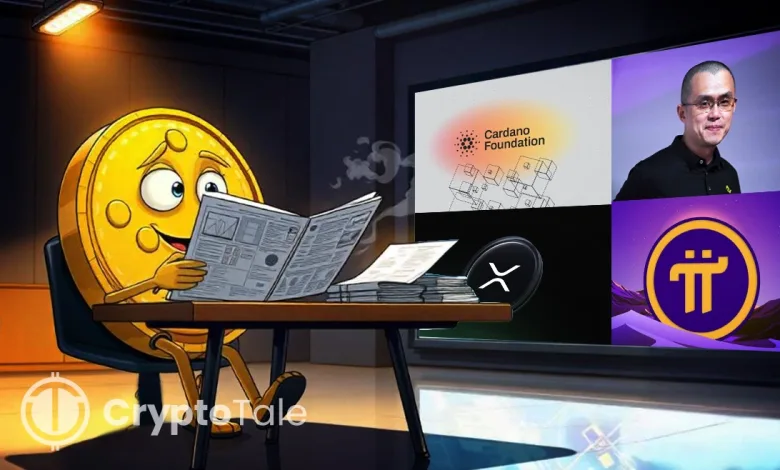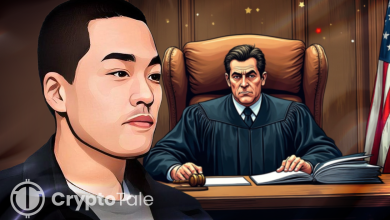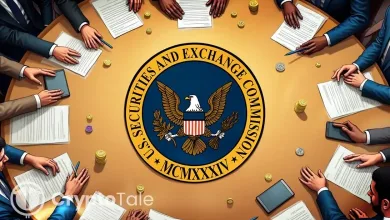The Blockchain Bulletin April 5th: Coinbase Eyes XRP Futures Launch

Hey folks! Welcome to our latest edition of the Blockchain Bulletin, where we unveil and gather insights that caught the headlines in the past 24 hours. Kicking things off with a familiar face, Coinbase Derivatives filed for self-certification to list XRP futures, eyeing an April 21 launch date—pending approval from the U.S. Commodity Futures Trading Commission (CFTC). This move positions Coinbase as the second U.S.-regulated entity to venture into XRP futures, tailing closely behind Bitnomial, which submitted its own filing just two weeks prior. This comes amid the heightened regulatory clarity around XRP, a digital asset that still holds its place among the top four by market capitalization. By pushing into derivatives, Coinbase is not just responding to institutional appetite but potentially widening XRP’s liquidity pool in a market hungry for regulated exposure.
Going some miles ahead in decentralized identity infrastructure, the Cardano Foundation has launched an open-source digital identity security platform named Veridian. This is also rolled out with the Veridian Wallet, bringing people direct solutions to increasing data breach issues—perhaps, most-worried of all being exposed to over 1.7 billion personal records compromised in the U.S. alone last year. As to its ultimate goal, Cardano indicates that its focus lies in bringing back control to people’s privacy-first architecture by using verifiable credentials. There is an increasing belief that centralization remains the weakest link in this digital identity management, so Veridian stands up, answering where people are rooted.
Related: Aptos Hits $1B Milestones, Eyes Role as Global Trading Engine
Tension was interrupted with a touch of geopolitical diplomacy as Changpeng Zhao, the former Binance CEO, inked an agreement with Kyrgyzstan’s National Investment Agency, pledging advisory support on blockchain regulation and crypto adoption. The memorandum of understanding underscores Zhao’s broader ambition to shape global governance frameworks beyond traditional crypto exchange models. Sharing the news on X, Zhao reaffirmed his pivot toward advising governments on leveraging blockchain beyond just asset exchange, extending the technology’s role into institutional and bureaucratic functions.
Michael Saylor, CEO of MicroStrategy, was at the center of what could be called a different debate since he once again maintained that the price fluctuations of Bitcoin were merely reflecting its global utility and were a characteristic, not a bug. Portnoy had made a solid argument, saying that if Bitcoin claims to be independent of fiat influence, why does it so perfectly mirror the mood swings of the S&P 500?
Speaking of dramatic gestures, former President Donald Trump turned heads yet again by unveiling a $5 million “Trump Gold Card” aboard Air Force One, flashing his mugshot with a flourish. Billed as a replacement for the EB-5 visa, this metallic-colored document promises privileged access to U.S. residency for wealthy individuals, complete with tax exemptions on offshore earnings. While critics highlighted the timing and optics, Trump simply called it the next step in “making America golden again.”
Elsewhere, the Pi Network made headlines by integrating with Banxa, allowing users to acquire Pi tokens directly through the platform’s wallet. This innovation enables access even before completing the migration process, but only for those who have passed KYC with Banxa. The development marks a milestone for Pi as it deepens its user engagement and aligns with mainstream digital asset channels.
Related: Harris and Obama Criticize Trump’s Impact on U.S. Democracy
Finally, the global economy shuddered as Trump’s fresh import tariffs sent Wall Street spiraling into its worst slump since the pandemic era. Despite the chaos, CoinMarketCap showed crypto standing firm with a total market cap of $2.69 trillion, reflecting a 0.69% daily gain. In this maelstrom of policy, politics, and public statements, one chain reaction triggered another—yet the digital economy continued moving forward, block by block, with only a brief pause to catch its breath.
These events of the week—XRP futures and Cardano’s identity launch through Zhao’s blockchain advisory and Trump’s gold card increasingly center on crypto’s central role in finance, governance, and identity. Even with tremors across markets, blockchain platforms pushed forward with precision. These events reflect a steady, evolving sector towards regulation, innovation, and alignment with wider global and technological movements.





